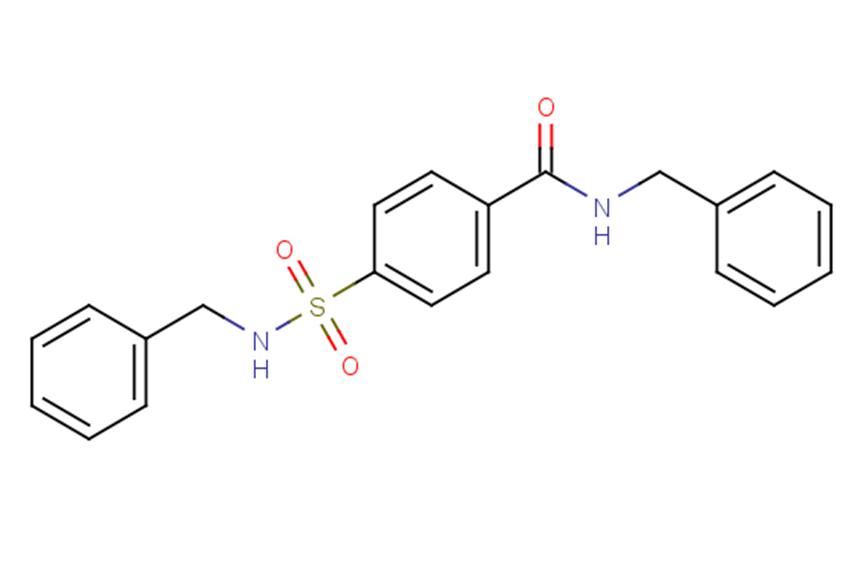
TH-263
CAS No. 313520-94-4
TH-263( —— )
Catalog No. M22572 CAS No. 313520-94-4
TH-263 is inactive toward both LIMK1 and LIMK2 and thus can be used as negative control for TH-257, and is a diaryl sulfonamide derivative.
Purity : >98% (HPLC)
 COA
COA
 Datasheet
Datasheet
 HNMR
HNMR
 HPLC
HPLC
 MSDS
MSDS
 Handing Instructions
Handing Instructions
| Size | Price / USD | Stock | Quantity |
| 5MG | 146 | In Stock |


|
| 10MG | 228 | In Stock |


|
| 25MG | 444 | In Stock |


|
| 50MG | 620 | In Stock |


|
| 100MG | 878 | In Stock |


|
| 500MG | 1755 | In Stock |


|
| 1G | Get Quote | In Stock |


|
Biological Information
-
Product NameTH-263
-
NoteResearch use only, not for human use.
-
Brief DescriptionTH-263 is inactive toward both LIMK1 and LIMK2 and thus can be used as negative control for TH-257, and is a diaryl sulfonamide derivative.
-
DescriptionTH-263 is inactive toward both LIMK1 and LIMK2 and thus can be used as negative control for TH-257, and is a diaryl sulfonamide derivative.
-
In Vitro——
-
In Vivo——
-
Synonyms——
-
PathwayOthers
-
TargetOther Targets
-
RecptorOthers
-
Research Area——
-
Indication——
Chemical Information
-
CAS Number313520-94-4
-
Formula Weight380.46
-
Molecular FormulaC21H20N2O3S
-
Purity>98% (HPLC)
-
Solubility——
-
SMILESO=C(NCc1ccccc1)c1ccc(cc1)S(=O)(=O)NCc1ccccc1
-
Chemical Name——
Shipping & Storage Information
-
Storage(-20℃)
-
ShippingWith Ice Pack
-
Stability≥ 2 years
Reference
1.Manetti F. Recent advances in the rational design and development of LIM kinase inhibitors are not enough to enter clinical trials. Eur J Med Chem. 2018 Jul 15;155:445-458.
molnova catalog



related products
-
Rimantadine
Rimantadine (Flumadine) is an anti-influenza virus drug for T. brucei with IC50 of 7 μM.
-
novaluron
Novaluron is a?benzoylurea?insecticide a member of monochlorobenzenes an aromatic ether and an organofluorine compound.
-
Selina-4(15),7(11)-d...
Selina-4(15),7(11)-dien-8-one is a natural product for research related to life sciences.



 Cart
Cart
 sales@molnova.com
sales@molnova.com


